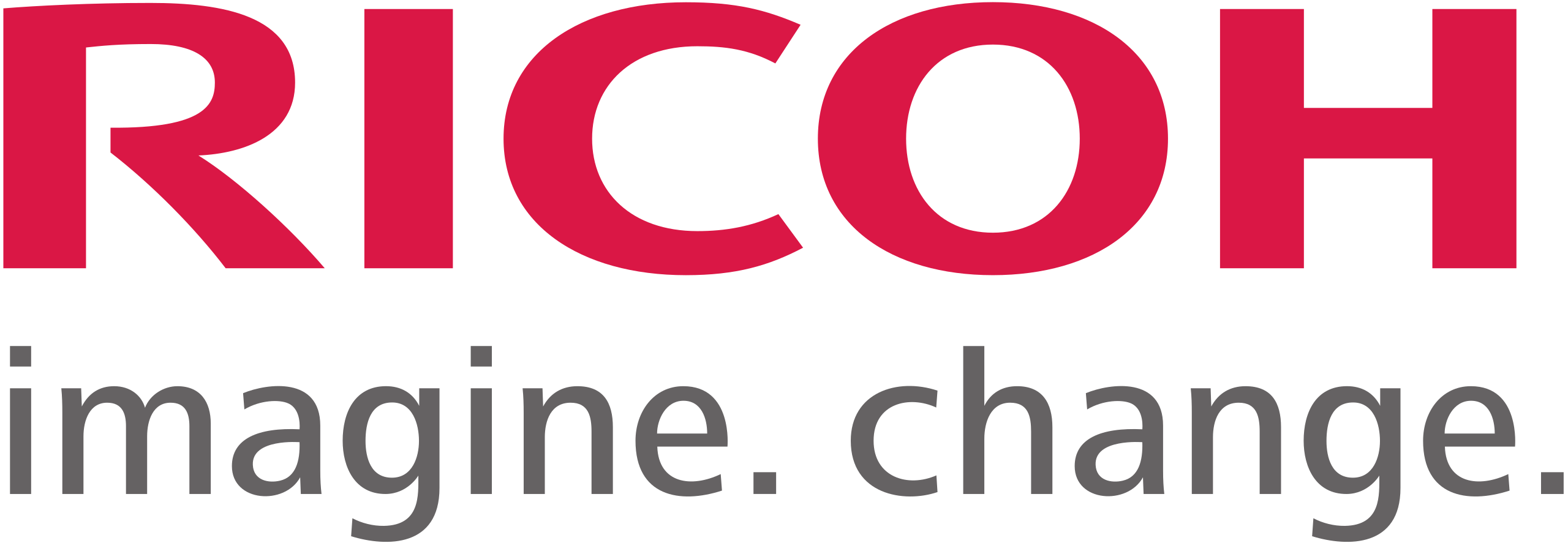9 min read
Cybersecurity: Terms and Concepts You Need to Know
By:
Standley Systems Staff
on
July 15, 2024
Updated: July 16, 2024

When they read headlines about the average cost of a data breach reaching almost $10 million in the U.S., it’s easy for small-business owners to dismiss those numbers as applying only to large corporations. The truth, though, is that small businesses — while they have a lower average cost associated with data breaches, at $3.3 million — are even more vulnerable.
The cybersecurity risks for small businesses spring from multiple factors. Such businesses are often unable to absorb the financial, legal, and reputational costs of a breach, so they’re more likely to go out of business within six months after one. Many small-business owners don’t feel like they have the resources and personnel to invest in robust cybersecurity measures, or they may not understand that they have more affordable options.
However, the most effective cybersecurity plan begins with the right mindset. The vast majority of cyberattacks are successful because of human error. Although cybersecurity is a highly technical field, most applications and devices are well-equipped with strong security protections. You don’t need to understand the code involved in encrypting your data, but you do need to know what types of threats are most common and how you can avoid them.
Why Cybersecurity Matters for Small Businesses
The reason cybersecurity attacks can be so devastating is that one data breach can have far-reaching effects in all of the following areas:
- Financial: The expenses associated with a cyberattack can be directly related to the attack, such as a payout to have ransomware removed or hiring someone to restore your system. There are also indirect expenses associated with data breaches, such as paying fines, providing identity theft protection for victims, and upgrading your cybersecurity measures.
- Reputational damage: Data privacy is one of the top concerns for consumers, especially since many don’t fully understand who has their data and what they’re using it for. A data breach can negatively affect your reputation and irrevocably harm your customers’ trust in you.
- Compliance risks: For businesses, protecting the data they collect is no longer optional. Laws such as the EU’s General Data Protection Regulation (GDPR) and the California Consumer Privacy Act (CCPA) mandate strong data protection and privacy standards. Even unintentional breaches carry hefty fines that could put a small company out of business.
Understanding Your Cybersecurity Landscape
You’ll be in a better position to protect your business from hackers if you understand the types of attacks they launch and what measures can prevent them. Some of the cybersecurity concepts you should be familiar with include the following.
Vulnerabilities
A vulnerability is a design flaw that can provide unauthorized access to software or hardware. When someone discovers a vulnerability in software, developers will release a patch to mitigate it. One of the biggest security risks is outdated software. The enormous 2017 Equifax breach that exposed the personal data of nearly 150 million people happened because of outdated software.3 The vulnerability was known, and a patch had been released — but no one installed it.
Other common vulnerabilities include not enforcing strong passwords, broken authorization controls, and missing data encryption. Because human error contributes so heavily to breaches, good software design enforces strong security protocols, even when seemingly inconvenient.
Cybersecurity Threats
Hackers are sophisticated criminals who are constantly upping their game. They’re usually among the first to figure out how to manipulate new technology for malicious intent. Due to this, the threat landscape is constantly evolving, but some of the top cybersecurity threats include:
- Malware: an umbrella term that includes any type of software that's designed to damage a computer system, such as a virus, spyware, or a keylogger
- Ransomware: a type of malware that locks the victim’s data unless they pay the attackers
- Denial-of-service (DoS) attack: a targeted attack that overwhelms your servers so they can’t perform normal business operations
- Phishing attack: an email, text, or social media “lure” that tricks victims into revealing sensitive information such as passwords or account numbers
Assets and Data
Modern businesses store and use an enormous amount of digital data. Some of it is highly sensitive, but much of it isn’t. Encrypting all of your data would be needlessly time-consuming and expensive, so you need to identify critical business assets to focus your efforts.
You likely have data scattered across different systems and devices, so your top priority should be determining where your assets are stored. Then you need to classify them based on sensitivity, such as:
- Restricted: If this data were compromised, it would cause significant financial, legal, or personal damage. Examples include protected health information, Social Security numbers, and other types of data that are covered under data protection regulations.
- Private: This is data that you wouldn’t want to get out, such as your pricing strategies or marketing plans, but it wouldn’t result in severe harm if it did.
- Public: This data can be freely accessed by anyone and doesn’t need specific protections, such as information that’s publicly posted on your website.
Once you’ve located and classified your data, you can adequately protect it based on its sensitivity.
Risk Assessment
A cybersecurity risk assessment can help you understand the types of threats your business faces so you can take steps to mitigate them. The end result is different for every business, but the general process includes the following steps:
- Identifying the risks to your data
- Assessing the likelihood of a security incident and its potential severity
- Developing a plan to deal with the risks based on their priority
Essential Cybersecurity Terms You Need to Know
The following terms are commonly used when in discussions about cybersecurity:
- Authentication: This process verifies who someone is when they’re trying to access a system, such as with log-in credentials.
- Authorization: Authorization determines what a user can do once they’ve been authenticated, such as whether they can access or edit data.
- Data breach: A data breach occurs when sensitive information is accessed or stolen by an unauthorized user.
- Encryption and decryption: Encryption converts data into unreadable code when it’s transmitted, so if an unauthorized person does access it, they can’t understand it. Decryption reverses the process once the data reaches its destination.
- Firewall: A firewall is a barrier between the internet and your computer system. It prevents unauthorized traffic from accessing your system.
- Intrusion detection system (IDS): An IDS monitors the traffic on your network for signs of suspicious activity and sends an alert so you can take action.
- Malware: This is any software program that’s designed to harm a computer.
- Phishing attacks: A phishing attack is a scam, often in the form of a fake website, intended to trick someone into providing confidential information such as their username and password.
- Ransomware: This type of malware encrypts a victim’s data and demands a payment to decrypt it.
- Two-factor authentication (2FA): This method of verifying a user’s identity requires two parts, such as a password and a code sent to a mobile phone.

Securing Your Business: Practical Cybersecurity Tips
Cybersecurity can seem overwhelming because of the many different factors involved. However, you can significantly improve your company’s data security with the following easy-to-implement tips.
Take Care of the Basics
Before you take more elaborate measures, make sure you have the basics covered. Implement a strong password policy, keep your software up to date, install a firewall, and use antivirus software on your devices.
Back Up Your Data
You can take a lot of the sting out of a ransomware attack if you have your data backed up. In addition to being a good idea from a security standpoint, keeping current backups of your data will protect you in the event of a natural disaster or some other catastrophe. Include a recovery plan so you can get back to business with minimal interruption.
Train Your Employees
If your employees are well-trained, they can be your first line of defense against a cyberattack. Many attacks rely on employees accidentally allowing unauthorized access. Provide a comprehensive cybersecurity awareness program that covers subjects such as:
- Password practices and management
- The importance of data privacy
- Email security, including how to recognize phishing attempts
- Best practices for Internet security, and understanding the difference between internet safety vs cybersecurity
- Physical security of offices, computers, and devices
Stay Updated
New technology is constantly emerging — particularly with business technology trends such as artificial intelligence, machine learning, and the cloud. Advances in tech can quickly change the nature of the threats you need to deal with and how you can defend your business. You can stay on top of emerging threats by following cybersecurity news and professional communities to keep up with best practices.
Why Partnering With a Cybersecurity Expert Is Critical
For small businesses with limited resources, handling cybersecurity in-house can be prohibitively expensive. Working with a cybersecurity professional is a cost-effective solution that can keep your business secure and compliant with legal requirements.
A cybersecurity partner can use advanced tools and methodologies, such as security assessments, threat modeling, and penetration testing, to proactively identify and address vulnerabilities in your system.
You’ll have advanced security and continuous protection without the need to hire your own department. Managed security services provide 24/7 monitoring and immediate responses to security incidents. They also help you comply with applicable regulations, keep detailed records, and generate compliance reports.
Standley Systems provides comprehensive cybersecurity services so you can protect your company while keeping your focus on your core business operations. Reach out today for a consultation and to learn how we can identify, detect, and respond to security threats before they interrupt your business.












